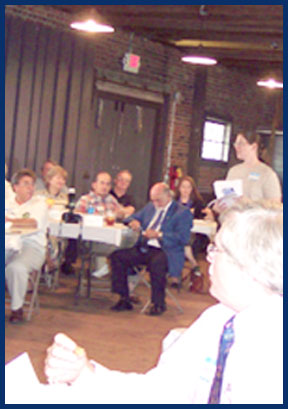 The best way to determine the significance of any archaeological or architectural site is to place it into its proper context. What are the historic themes important to a community and what are the resources associated with these themes? These topics can be answered with thorough research of the history of a community and its changes over time. New South Associates is skilled in analyzing the history of a city or county and its built environment, using the current landscape and architectural features of a community to determine the historic context for a site. By comparing both archival resources and surviving cultural resources that are prevalent in the area, historians at New South Associates can offer a comprehensive approach to preservation strategies for a significant building, landscape, historic site, or archaeological feature.
The best way to determine the significance of any archaeological or architectural site is to place it into its proper context. What are the historic themes important to a community and what are the resources associated with these themes? These topics can be answered with thorough research of the history of a community and its changes over time. New South Associates is skilled in analyzing the history of a city or county and its built environment, using the current landscape and architectural features of a community to determine the historic context for a site. By comparing both archival resources and surviving cultural resources that are prevalent in the area, historians at New South Associates can offer a comprehensive approach to preservation strategies for a significant building, landscape, historic site, or archaeological feature.
City and county contexts typically provide:
• A history of the area based on archival research and previous survey documentation;
• The identification of themes and topics that are significant within the communities history (i.e. religion, civic organizations, commerce, etc.);
• A discussion of the building types, historic sites, and features within a community as they relate to these themes;
• Explanation of historic patterns that have affected cultural resources in the city or county; and
• Predictive preservation strategies for those resources which are unique or important to a community.
New South Associates consistently provides quality city and county historic contexts, which often form a framework for intensive surveys of cultural resources, another service provided by the company. Offering a comprehensive analysis of a community’s history and the importance of its cultural resources, these contexts created by New South Associates are used by city and county governments, local planners, interested citizen groups, historic preservation professionals, non-profit historical societies, and state government agencies such as the Departments of Transportation and the State Historic Preservation Offices.
